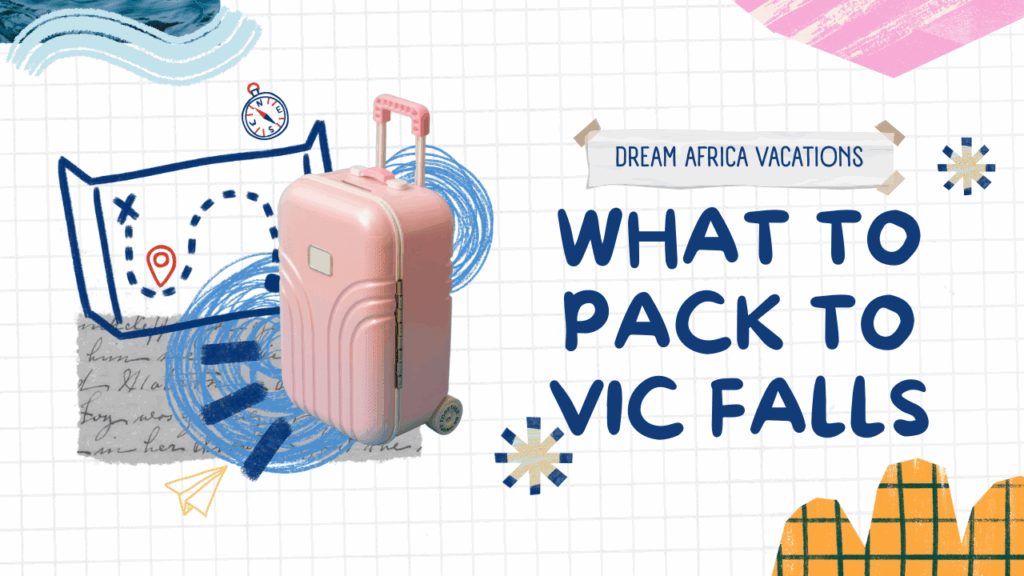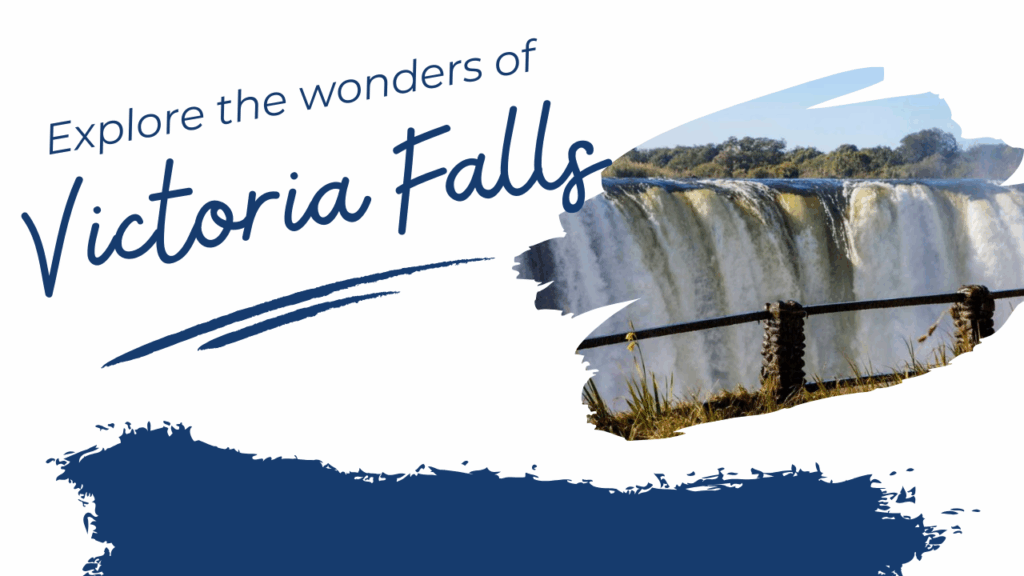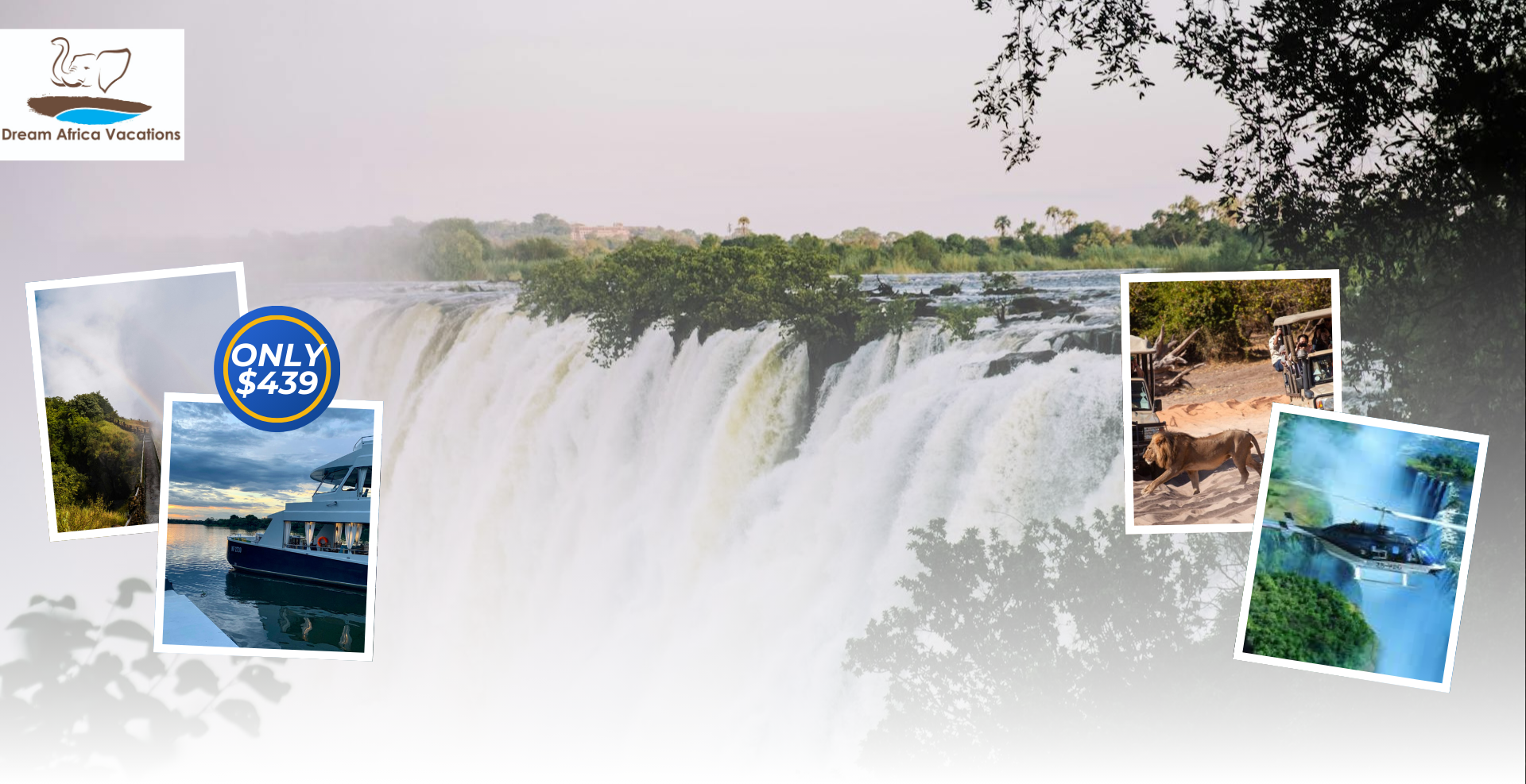Table of Contents
- Introduction: Why Travel to Victoria Falls?
- What to Expect: Benefits & Risks of Visiting Victoria Falls
- Weather Overview: Average Conditions by Season
- What to Pack for Victoria Falls
- Top 3 Best Times to Visit (for Wildlife, Adventure & Photography)
- Final Tips Before You Go
- Conclusion
Introduction: Why Travel to Victoria Falls?
Victoria Falls, one of the Seven Natural Wonders of the World, straddles the border between Zimbabwe and Zambia and is one of Africa’s most breathtaking destinations. Known locally as Mosi-oa-Tunya (“The Smoke That Thunders”), the Falls offer a thrilling combination of natural beauty, adventure activities, and cultural richness.
What to Expect: Benefits & Risks of Visiting Victoria Falls

Benefits
- Stunning Scenery: A UNESCO World Heritage Site, Victoria Falls offers awe-inspiring views and a once-in-a-lifetime waterfall experience.
- Adventure Paradise: Activities include bungee jumping, white-water rafting, zip-lining, and helicopter flights.
- Wildlife Encounters: Safari opportunities abound in nearby national parks like Mosi-oa-Tunya, Hwange, and Chobe. Check out this amazing 5 Day Classic Victoria Falls & Chobe Safari
- Rich Culture: Interactions with local communities, craft markets, and traditional performances enrich your travel experience.
Risks
- Malaria Zone: The region is malarial, especially in the rainy season. Consult a doctor about prophylactics. Check out the full preventive guide here!
- Safety Concerns: Petty theft can occur. Stay vigilant in crowded or tourist-heavy areas.
- Weather Extremes: Heavy rain during the wet season (especially January to March) may limit visibility and outdoor activities.
- Currency Fluctuations & Costs: Zimbabwe uses multiple currencies, which can be confusing. Zambia uses the kwacha. Bring USD for flexibility.
Weather Overview: Average Conditions by Season in Victoria Falls
Victoria Falls has a subtropical climate with three primary seasons:
| Season | Months | Weather Summary | Avg. Temps (°C) |
| Wet Season | Nov–Mar | Hot, humid, thunderstorms, lush landscapes | 20–32 |
| Shoulder Season | Apr–May | Mild weather, falls in full flow, fewer crowds | 16–28 |
| Dry Season | Jun–Oct | Cool mornings, warm days, excellent for safaris | 8–28 |
💡 Tip: June to August brings the most comfortable climate, while March–May showcases the falls at their most dramatic.
What to Pack for Victoria Falls?

Clothing:
- Lightweight, breathable clothes for day
- Long sleeves/pants for evenings (against mosquitoes)
- Waterproof jacket or poncho (especially Nov–Apr)
- Swimwear (for Devil’s Pool or lodges with pools)
- Comfortable hiking shoes or sandals
Essentials:
- Passport + visa (check if needed for Zimbabwe/Zambia)
- Yellow fever vaccination certificate (if traveling via endemic countries)
- Malaria medication
- Sunscreen & insect repellent (with DEET)
- Dry bag or waterproof phone case
- Universal power adapter
Optional (but useful):
- Binoculars (for wildlife viewing)
- Camera with waterproof housing
- Quick-dry towel
- Reusable water bottle
- Small backpack or daypack
Top 3 Best Times to Visit (for Wildlife, Adventure & Photography)

1. For Wildlife Viewing: August–October
- Water levels are lower, making it easier to spot animals in nearby national parks.
- Best safari conditions in Hwange, Chobe, and Zambezi parks. Catch the well curated Hwange National Park day trip and take a sneek peek into the heart of Africa’s big 5
- Dry conditions mean fewer mosquitoes.
2. For Adventure Activities: June–August
- Moderate water levels allow optimal white-water rafting and swimming in Devil’s Pool (from mid-August).
- Cool, dry weather is ideal for hiking and outdoor sports.
3. For Photography: March–May
- The falls are at peak flow after the rains—great for dramatic mist and rainbows. This is surely the best time to do the scenic guided tour of the falls & the flight of angels to get a eagles eye view from the skies.
- Lush, green vegetation provides vibrant landscape shots.
- Be ready to protect gear from the heavy spray.
Final Tips Before You Go!
- Border Crossing: Consider a KAZA Univisa, which allows easy movement between Zambia and Zimbabwe.
- Cash Matters: Many places don’t accept cards. Carry small denominations in USD or Zambian kwacha.
- Booking Early: For high season (July–October), book accommodation and tours in advance.
- Stay Hydrated: The sun and heat can sneak up on you—always carry water.
- Respect the Environment: Use eco-friendly products and follow guides’ instructions near wildlife and the falls.
Conclusion : Now That You All Geared Up Let’s Get Travelling

Victoria Falls is more than just a waterfall—it’s a world of thunderous beauty, thrilling adventure, and untamed wilderness. With the right preparation, you can enjoy everything from awe-inspiring nature and adrenaline-fueled fun to unforgettable wildlife experiences.
Use this guide to pack smart, travel safe, and make the most of every moment at one of Africa’s greatest treasures.
Feel the thunder. Chase the mist. Conquer the wild.
Victoria Falls isn’t just a destination—it’s a pulse-pounding experience waiting to ignite your soul. Dive into the heart of Africa’s raw beauty, stand on the edge of one of the world’s greatest natural wonders, and let adventure drench every step of your journey.
Download your free Victoria Falls Packing checklist here!


